Flying the Orient Express: the Handley Page H.P.42 Heracles!
I would like to preface this article with one remark: I have hardly found such amazingly good and varied photographic material for any other aircraft of this era than in the search for material on the H.P.42 Heracles! In pictures whose outstanding resolution and excellent workmanship reveal the efforts of a professional photographer, one sees the imposing giant aircraft skilfully put into the picture. Sometimes carefully arranged and good-humoured passengers pose, who, according to their clothing and self-confident appearance, at least belong to the "upper class", while the crew and ground staff go about their work in the background.
I was genuinely surprised by this, because on the one hand the original aircraft was already flying in the 1930s; one is not used to such high quality photographic material from that time. On the other hand, the HP.42 is not exactly a well-known aircraft type or one that was built in large numbers - who could expect such a wealth of high-quality pictures?
Imperial Airways and the H.P.42 Heracles.
The answer to this question will probably be found in the special role for which the HP.42 was designed. The initiative for the design and construction of this spectacular aircraft came from Imperial Airways; an airline that carried its claim in its title: "Imperial" had been established under governmental aegis after the First World War to accelerate the connection of the British mother country with the far-flung colonies and dominions of the British Empire by means of the aircraft. By the early 1930s, the company's wildest pioneering days were behind it, routes had been mapped and tested - and Imperial Airways could represent the achievements and advantages of the British Empire with reliable long-haul flights to destinations such as Cairo, Karachi or Hong Kong. To this end, a new type of aircraft was to be purchased that could combine reliability, safety and range with the luxury that Imperial's well-heeled public expected.
Handley Page was happy to accept this challenge, as it not only had years of experience in the construction of large aircraft, but had also provided one of the four airlines, the Handley Page Transport Co Ltd, which merged to form Imperial Airways in 1924.
On 14 November 1930, two years after planning began, the first H.P.42 with the proper name "Hannibal" took off on its maiden flight. Imperial was impressed by the performance of the new long-haul aircraft and ordered eight H.P.42s as planned. Four aircraft were intended for long-haul flights to Africa and India and were therefore given the suffix "E" for "East", while the four remaining H.P.42 "W" (for "West") were to be used for European destinations. By the way, all eight H.P.42s were given names beginning with the letter H: thus, until 1 September 1939, the H.P.42s Hannibal, Horsa, Hanno, Hadrian, Heracles, Horatius, Hengist and Helena flew in Imperial Airways service.
All eight H.P.42s did justice to the tasks for which they had been created. At a time when flying was much more unpredictable, accident-prone and adventurous than it is today, the Heracles contributed remarkably little to the accident statistics until September 1939. This may also be due to the design concept, which relied on the tried and tested without dispensing with modern elements. Thus the H.P.42 was still designed as a conventional biplane with a large wing area and slow flying speed, but on the other hand this layout was implemented as a modern all-metal construction. Only the control surfaces and individual segments of the wings remained covered with fabric or were planked with wood.
The struts between the two wings were designed as a stable construction based on the principle of isosceles triangles. Safety was to be further enhanced by the use of automatic slats on the upper wing.
Imperial Airways had placed great emphasis on the ability to land and take off from unprepared grass runways and therefore demanded superior low-speed flying characteristics. Accordingly, the H.P.42 was able to cruise at a comfortable 160km/h - with a top speed of 190km/h. The H.P. Heracles was powered by four Bristol Jupiter XIFs, each producing 500 hp on four wooden propeller blades. The maximum range of the 12 700 kg machine was over 800 kilometres.
In luxurious surroundings, up to 24 passengers were accommodated in two separate compartments with full on-board service. It is significant that the interior design of these compartments was based on the stylish appearance of the Pullmann sets of the Orient Express, as instructed by Imperial. Luxuriously upholstered seats, which were initially not even equipped with seat belts for the sake of comfort, were to spread the ambience of a first-class railway carriage in conjunction with large windows. However, what stood in the way of comfort somewhat were the effects of the demanded ability to fly slowly: due to the large wing area and the low speed, the Heracles swung briskly about all axes in the slightest turbulence; the frequency and intensity of air sickness in general and nausea in particular was, as contemporary witnesses were able to report, a much greater issue than in later times.
About the H.P.Heracles G-AAXC
The H.P.42(W) Heracles presented here as a model was used on European routes from August 1931 until the outbreak of war. Regular destinations were Paris, Cologne and Zurich; the aircraft registered as G-AAXC did this so reliably that already in July 1937 one million flight miles could be noted in the logbook. In keeping with the excellent reputation of the type, it also achieved this feat without any accident or other irregularity. Her end, however, turned out to be decidedly "stormy". It had been taken over by the RAF on 3 March 1940, but on 19 March at Whitchurch base it was blown into H.P.42 Hanno by a storm with such force that both aircraft had to be written off.
About the kit and the building process
The H.P.42 Heracles from Airfix is one of those kits that I have known since my childhood - no wonder, as the moulds with the first release date 1965 are two years older than me. The beautiful box picture with the Heracles flying gravitationally in front of the pyramids of Giza certainly made more than just me dream!
However, I only held the parts in my hands much later: in 2021, Airfix brought a new edition of this antique kit onto the market in the Vintage Classics series. Since there was the prospect of newly printed and thus usable decals, I now ventured on this adventure. As with any good adventure, there was a basic possibility of failure. This quickly became clear to me in view of the completely oversized rib structures of the wings, the poor quality of the clear parts and the poorly detailed surfaces and missing details typical of the time. On the other hand, the parts had a certain charm - and the corrugated metal structure of the fuselage seemed to me to be captured quite well.
Despite all the willingness to compromise, which is unavoidable in view of the scale and the age of the kit, it was nevertheless a pleasure for me to push my improvisation skills a little: especially with the numerous detail shapes that can be found on the outside of the fuselage but are not taken into account in any way in the kit, I did not want to admit defeat so quickly. So I researched the antennas, the exhaust pipes, the windlass-driven generator, the pitot tube as well as the wiring of the engines and then built them myself. I also added the details of the bracing to the tail unit and a completely new tail wheel/undercarriage leg. The wings of the two main landing gear legs were also rebuilt from leftover etched parts. The bracing between the two wings was done with very thin flat wire.
This all took a little time, but what also took a lot of energy was the sanding of the much too exaggerated rib structure on all sides of the surface. Starting carefully, I eventually got rid of all the rib structure. This seemed to be the best solution in view of the original pictures and the very small scale. The ribs remained only where the original also shows a fabric covering, something at the surfaces of the tail unit and at the front wings. If you take on this kit, you can generally expect a high need for trimming and preparation. Almost all parts show variations of the "fish skin" theme and need to be prepared.
The kit clear parts of the cabin windows are very thick and unevenly cast "slug windows", so it was quickly clear that I would use the "Klearfix" method to insert them at the end of the building process. This then also worked wonderfully. It was also exciting to see how the decals would behave on the very small textured corrugated metal surface. Fortunately, the repeated use of softeners and fixing fluid had finally convinced them to nestle satisfactorily into the fine recesses.
Summary
In conclusion, I really enjoyed building this venerable Airfix kit. On the one hand, the fragile biplane nature of the original and the unusually small scale demand ingenuity and perseverance, but on the other hand these conditions are almost relaxing: "perfection" is not possible here anyway for my skills, but what remains is the fun of having tried the best. I am now happy to return to somewhat less complex modelling tasks, but not without already looking forward to the next modelling diversion a la' "H.P. Heracles/ Airfix"!


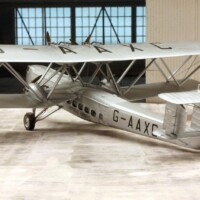




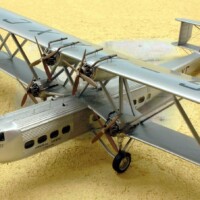



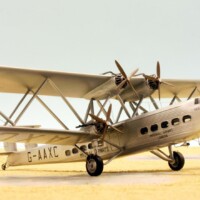


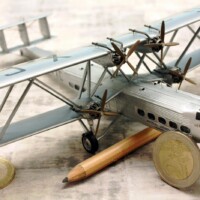
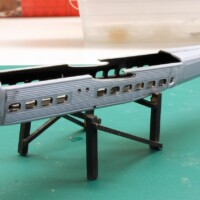














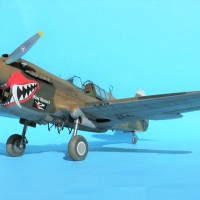


You did an amazing job, Roland!
And I loved reading all the historical facts.
Congratulations!
I am very pleased with your words, my friend!
That's amazing. It presents as a much larger scale model. Seeing the coins and pencil with it drives the actual size of the model home. I hope you didn't go cross eyed for to long after doing that rigging! Beautiful job.
Beautiful job.
Thanks a lot Clint, and: got by just fine!
What an awesome build, especially in 1:144! I'm a fan of those old inter-war machines, thanks for the history on this one.
Thank you very much, Chas! Isn't it connective how many of us treasure these old kits?
Impressive result, Roland @rosachsenhofer
Good you pictured it with a Euro coin because it looks much bigger.
Thanks for the background.
Thank you for your motivating words!
What a splendid looking aircraft. You did a marvelous job!
Thank you John!
That's a charming model and a very nicely realised rendition especially in 1/144. All your effort has really paid off.
There are plenty of superb photos of aircraft from the 1930s if one knows where to look. A good start are the Alarmy and Getty collections. The Jive Bomber Blog site also has a lot of excellent photos. It's a matter of looking at multiple sources.
Thank you for your comment, I'm glad! I really appreciate the tips on image sources, thank you! I didn't know most of them.
Nice work on a classic kit, Roland.
Thank you John, appreciated!
Your hangar seems to work in all scales, no one would have guessed the size of this splendid model without you telling them. Congratulations on bringing this old Airfix kit up to scratch, Roland, and in supplying such an interesting history to go with it.
Thank you George! I also see it that way with the hangar - it's quite astonishing!
Thank you George! I also see it that way with the hangar - it's quite astonishing!
Excellent Roland (@rosachsenhofer). I agree with the other's the model presents very well evening at that small scale. Some of those photos look like a much larger model.
Thank you very much for your comment and this estimation! I appreciate that very much!
Wow - what an unusual bird, and a beautiful job, especially in that scale. Well done!
Thank you Greg, very appreciated!